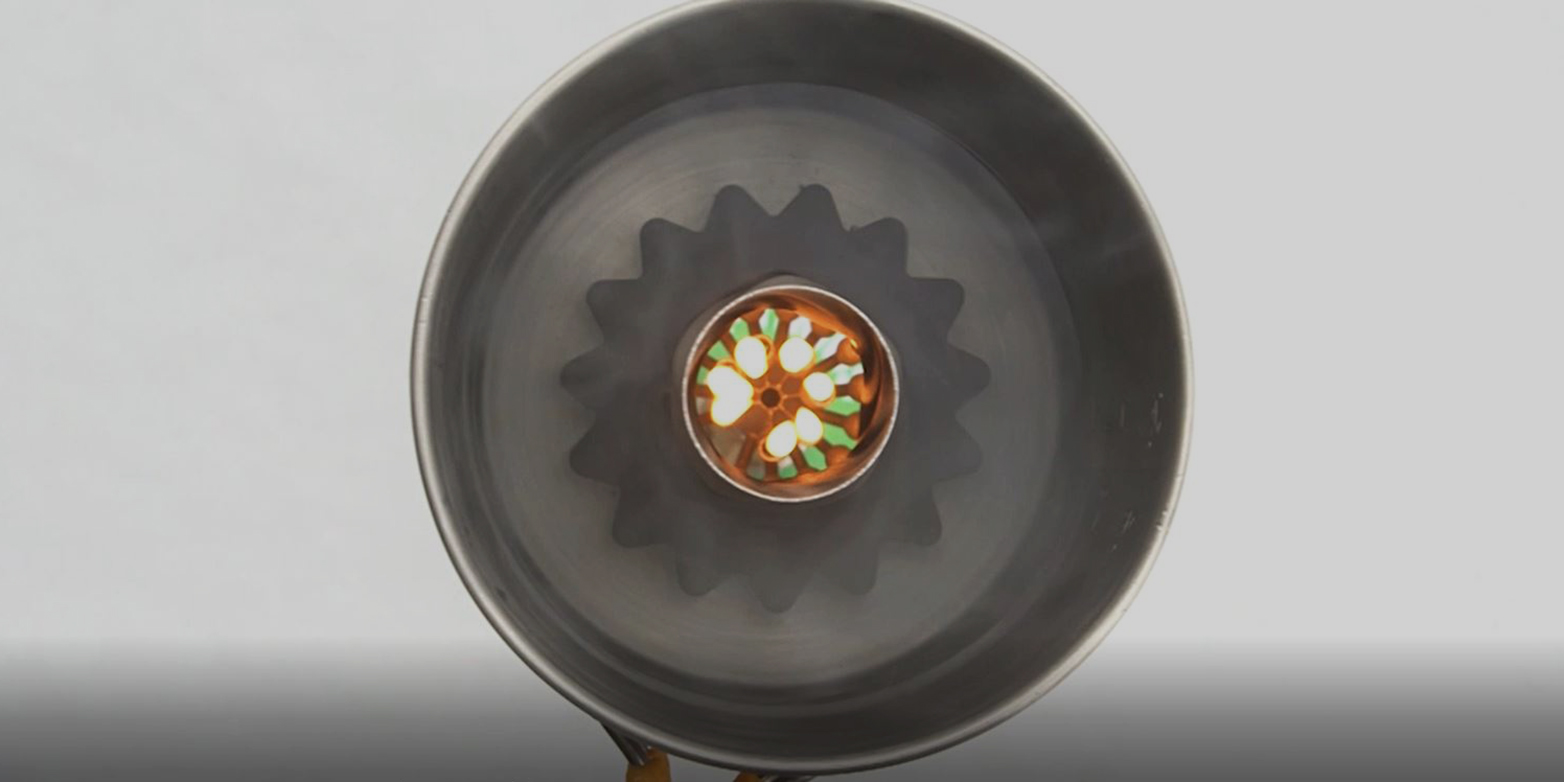![Top view of the 3D printed metal PeakBoil kettle [Source: ETH Zurich]](https://fabbaloo.com/wp-content/uploads/2020/05/peakboilov_img_5eb0a98175185.jpg)
This week’s selection is the highly unusual PeakBoil by students at ETH Zurich.
The item is a radically different camping stove that is specialized for boiling water, 3D printed in metal.
The students were no doubt inspired by real-life frustration in using camp stoves, which are notoriously difficult to operate in windy environments. Of course, windy days are precisely when you want hot water to warm up.
The wind tends to blow out or deflect flames away from the bottom of conventional boiling systems, in which a pot simply sits on top of the flame.
The new PeakBoil design involves re-routing the flames to an internal path through the water. This has several effects, including a more efficient process overall.
![Cutaway view showing the internal structure of the 3D printed metal PeakBoil [Source: ETH Zurich]](https://fabbaloo.com/wp-content/uploads/2020/05/image-asset_img_5eb0a9822aa47.jpg)
Because the flames are enclosed, there is far less risk of the flame being extinguished by wind. In addition, there is actually less fuel consumed because the flame can be minimized without risk, as conventional systems often demand that the flame be cranked up higher to overcome wind deflection. There is also more contact area between hot chutes and water, and the thin 3D printed metal walls also allow more efficient heat transfer.
The design also includes venturi nozzles that increase airflow, also contributing to fuel efficiency.
![The 3D printed PeakBoil in its kettle [Source: ETH Zurich]](https://fabbaloo.com/wp-content/uploads/2020/05/image-asset_img_5eb0a98278266.jpg)
This is done by including “ripples” in the surface area of the PeakBoil, which acts much like a chimney. This obviously requires a specialized kettle to hold the hot elements, which accompanies the 3D printed component.
The PeakBoil is no ordinary kettle, as you can see.
The design was tested on an expedition and users found no trouble using the efficient PeakBoil. It seems that the design is so effective it might also be used in larger-scale industrial water heating systems.
At this time there does not appear to be a way to obtain a 3D printed version of the PeakBoil, but perhaps in the future those behind the project might offer it to the public. I am sure many speciality camping equipment outlets would love to get this produce on their shelves.
This item is also an excellent demonstration of how 3D printing technology can produce a radically more effective product, even for something as commonly found as a water kettle.
Take a look around at the objects you normally use and ask yourself the question, “how could this be different with 3D printing”.
Via ETH Zurich

